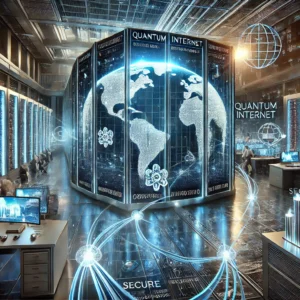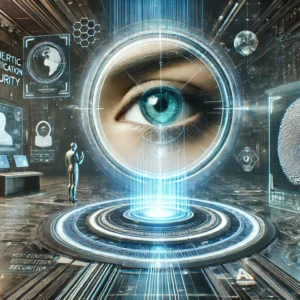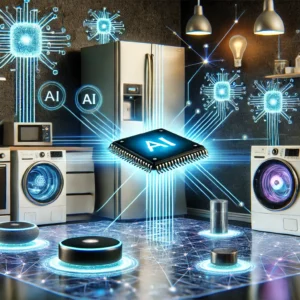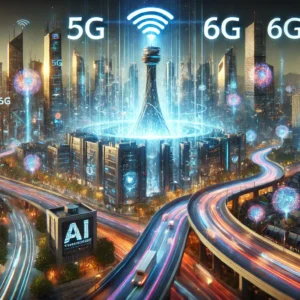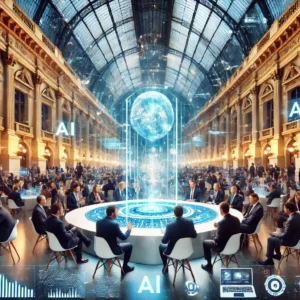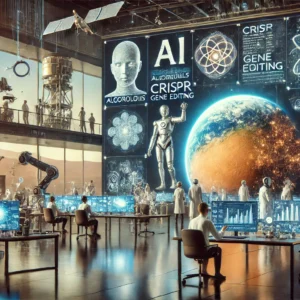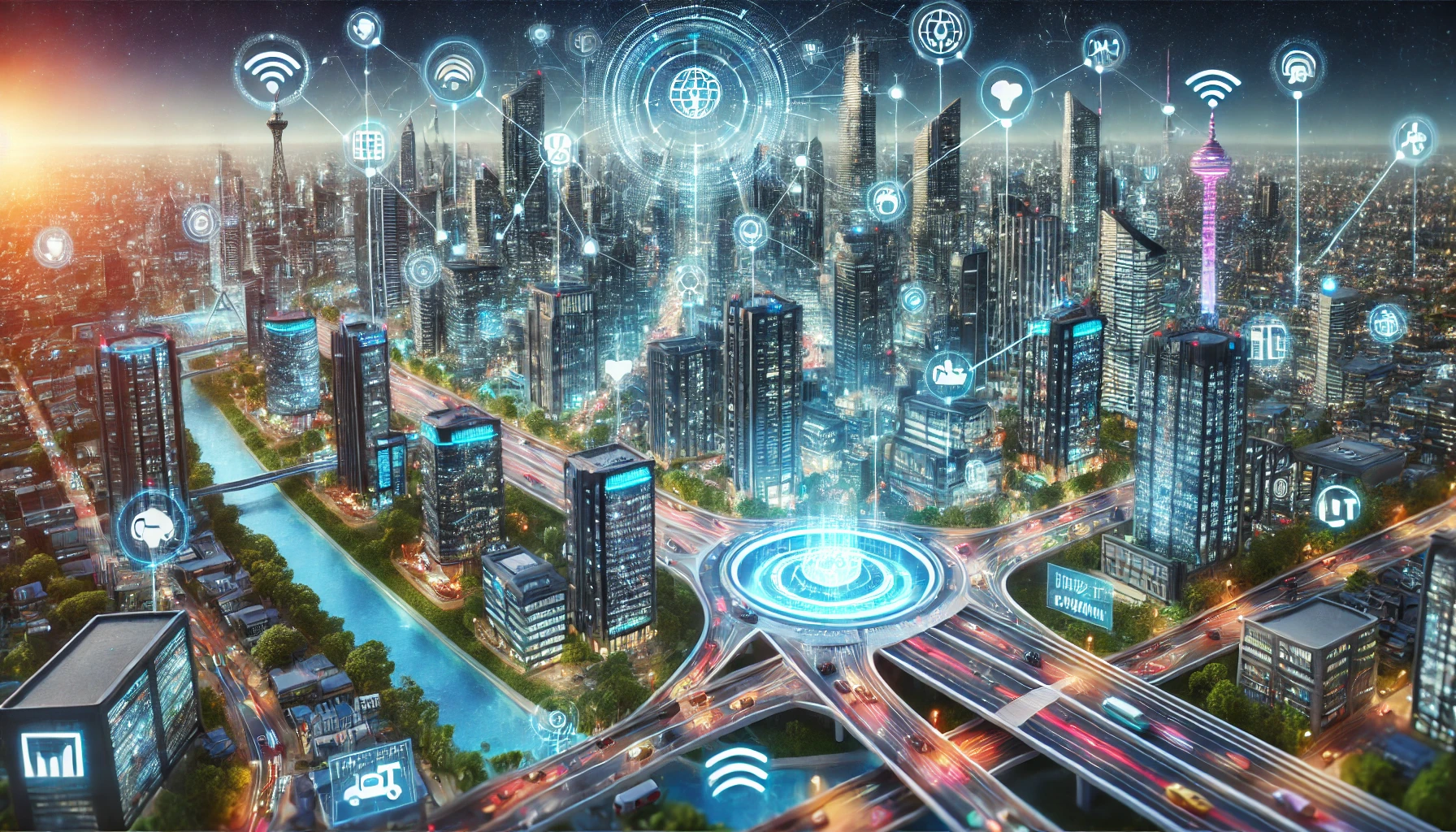
Imagine walking into a city that intuitively adjusts its energy flows, manages traffic with split-second precision, and even customizes public services based on real-time needs—all powered by an intricate network of IoT devices. Welcome to the world of smart cities and IoT infrastructure, where urban landscapes are reimagined into seamlessly connected environments that optimize energy, resources, and the very quality of life.
Unraveling the Smart City Vision
At its heart, a smart city leverages digital technologies and Internet of Things (IoT) sensors to create a networked urban ecosystem. Picture this: streetlights that dim when no one is around, water systems that detect leaks instantly, and transportation networks that reroute traffic to ease congestion—all orchestrated by data flowing in real time. This isn’t merely a futuristic ideal; it’s an evolving reality that promises sustainable urban living and resource optimization.
IoT in smart cities enables the collection and analysis of vast amounts of data from sensors embedded in infrastructure. From air quality monitors to smart grids, these data points allow city managers to make informed decisions quickly. As urban areas grow, the need for efficient resource management has never been more critical. By interconnecting devices and systems, smart cities aim to reduce energy waste, lower operational costs, and ultimately, improve residents’ quality of life.
Government Initiatives: Paving the Way
Governments worldwide are championing smart city projects as part of their economic and environmental strategies. For instance, cities in Europe, Asia, and North America have launched large-scale initiatives that integrate IoT into their urban planning.
In Singapore, a global leader in smart city development, government-backed programs have led to significant investments in energy-efficient public lighting and real-time traffic monitoring systems. These initiatives are designed not only to reduce carbon footprints but also to create a resilient infrastructure that adapts to changing urban dynamics. Recent government documents, such as those highlighted by Singapore’s Smart Nation initiative, emphasize a multi-layered approach that combines technology, policy, and community engagement.
Across the Atlantic, U.S. cities like San Diego and Boston are actively pursuing smart city projects. Federal and state grants are fueling research into IoT-based infrastructure, focusing on everything from renewable energy integration to advanced waste management systems. Political debates often surface around these initiatives, with some advocating for increased public funding while others caution against overreliance on private-sector technology.
Political Dynamics and Urban Transformation
The political landscape is a critical driver behind the expansion of smart cities. Elected officials and policymakers understand that modernizing urban infrastructure can boost economic growth, enhance public safety, and address environmental concerns. However, political controversies persist. Critics argue that rapid technological implementation might sideline privacy rights or exacerbate digital divides if not carefully regulated.
For example, recent discussions in the European Parliament have centered on establishing stringent data protection laws to accompany smart city deployments. Politicians stress that while IoT offers groundbreaking benefits, its adoption must be balanced with robust cybersecurity measures and citizen privacy safeguards. This debate is echoed in the United States, where congressional committees are actively reviewing policies to ensure that IoT-enabled public services do not compromise individual rights.
Research Labs and Scientific Innovations
Behind the glittering promise of smart cities lie pioneering research labs and innovative scientists driving the technological revolution. Academic institutions worldwide are delving into IoT research to develop more resilient, energy-efficient, and secure urban systems.
A landmark study published in a renowned engineering journal showcased a novel machine learning framework designed to predict and mitigate energy wastage in urban grids. Researchers collected data from thousands of IoT sensors installed in a test city, employing advanced algorithms to optimize power distribution in real time. This study, available on IEEE Xplore, illustrates how IoT data can be harnessed to create more sustainable energy systems.
In addition to energy management, scientists are also exploring applications in public health, environmental monitoring, and smart transportation. Collaborative projects between universities in Europe and Asia are developing next-generation sensors capable of detecting pollutants at minute levels, thus providing a clearer picture of urban environmental quality. These scientific endeavors are the backbone of smart city innovations, ensuring that the technology not only meets current needs but is also scalable for future challenges.
Celebrity, Sports, and Business Perspectives
The conversation around smart cities and IoT infrastructure isn’t confined to technologists and policymakers—it has captured the imagination of celebrities, athletes, and business moguls. Public figures and sports icons have recently lauded the concept of smart cities, praising their potential to transform everyday life.
A famous international athlete recently tweeted about how smart transportation systems in his hometown have made commuting smoother and safer. Likewise, business leaders from tech giants and startups alike are investing billions in IoT solutions, predicting that smart cities will be the epicenter of future economic growth. These endorsements not only boost public confidence but also attract venture capital and strategic partnerships, fueling further innovation.
Top business executives have cited examples where cities have realized substantial savings on energy and maintenance costs through IoT implementations. With projections estimating that global smart city technology revenue could soar into the hundreds of billions by 2030, there’s no doubt that the economic implications are as transformative as the technological ones.
Intergenerational Insights: From Wisdom to Innovation
The Voice of Experience
Older generations often reflect on the rapid pace of urban transformation with a mix of admiration and skepticism. Many recall times when urban services were rudimentary, and the idea of a “smart” city was unthinkable. For them, smart cities represent a double-edged sword—while the promise of enhanced safety and convenience is appealing, there is also concern about data privacy and the potential loss of human touch in public services. Retirees and community elders have voiced a cautious optimism, urging that as cities modernize, equal emphasis should be placed on safeguarding personal freedoms and maintaining community spirit.
Youthful Enthusiasm and Digital Natives
In contrast, the younger generation embraces the digital revolution with open arms. Millennials and Gen Z, who have grown up in an era of smartphones and instant connectivity, see smart cities as the natural progression of urban life. Their enthusiasm is palpable on social media platforms where they share experiences about smart traffic apps, energy-saving smart homes, and innovative public spaces powered by IoT. For these digital natives, smart cities are not just about technological marvels—they represent an opportunity to live in a more sustainable, efficient, and vibrant urban ecosystem.
Social Implications and Community Impact
The advent of smart cities brings profound changes to the social fabric of urban life. These technologies are set to redefine how citizens interact with their environment and each other. For example, IoT-enabled public services can streamline municipal operations, making government more responsive to citizens’ needs. Smart waste management systems ensure cleaner neighborhoods, while real-time traffic monitoring can reduce urban congestion and pollution.
However, the shift toward fully integrated smart cities is not without its challenges. Critics argue that without careful planning, the digital divide may widen, leaving behind communities that lack access to advanced technologies. Social equity and inclusivity must be at the forefront of smart city planning. Initiatives that engage local communities in the decision-making process can help bridge this gap, ensuring that technological advancements benefit all citizens equally.
Community forums and town hall meetings have become common in cities transitioning to smart infrastructure, providing residents with the opportunity to voice concerns and contribute ideas. These grassroots discussions are vital, as they offer a human perspective that complements the technical and economic dimensions of smart city projects.
Economic Boom: Global Business and Revenue Potential
The economic ramifications of smart cities and IoT infrastructure are enormous. Globally, investments in smart city projects have surged, driven by the promise of reduced operational costs, enhanced public services, and new revenue streams.
In cities across Asia, Europe, and North America, governments are partnering with private tech companies to develop smart urban solutions that promise not only sustainability but also significant economic returns. For instance, smart grids that dynamically adjust energy distribution can save millions of dollars in operational costs. Businesses benefit from reduced downtime, increased efficiency, and improved customer satisfaction. The global market for smart city technology is expected to grow exponentially, with revenue projections reaching astronomical figures in the coming decade.
Key business hubs, such as Silicon Valley, Tokyo, and Berlin, are at the forefront of these investments. In addition, emerging markets in Africa and Latin America are beginning to adopt smart solutions, aiming to leapfrog traditional infrastructure challenges. The convergence of technology and urban planning is creating a fertile ground for startups and established companies alike, all competing to harness the next big breakthrough in urban connectivity.
Key Milestones and Future Timelines
The journey toward fully realized smart cities is marked by several critical milestones:
- 2022-2023: Early adopter phase, where pilot projects in cities like Singapore, Barcelona, and San Diego have laid the groundwork for IoT integration in public infrastructure.
- 2024: Major rollouts of smart city initiatives, with increased public and private investments. Cities begin to implement large-scale projects in energy management, traffic control, and public safety.
- 2025: This year is pivotal—global conferences, policy updates, and technological breakthroughs are expected to accelerate the adoption of smart city solutions. In 2025, many cities will announce ambitious plans to fully integrate IoT into their urban systems.
- 2030: Projections indicate that by 2030, smart city technology will be ubiquitous in developed urban centers worldwide, with substantial economic and social benefits realized.
These dates are backed by various government reports, academic studies, and industry forecasts, reflecting a realistic trajectory for the smart city revolution.
Technological Innovations Driving Smart Cities
Advanced IoT Sensors and Networks
The backbone of smart cities is a robust network of IoT sensors. These devices collect data on everything from air quality and noise levels to energy usage and pedestrian flow. Modern sensors are highly accurate and can operate in diverse conditions, ensuring reliable data collection. This data is then transmitted through high-speed networks to central systems that analyze and act upon it in real time.
Artificial Intelligence and Machine Learning
Artificial intelligence (AI) plays a crucial role in transforming raw data into actionable insights. Machine learning algorithms can predict traffic patterns, detect anomalies in energy consumption, and even foresee potential infrastructure failures before they occur. By continuously learning from incoming data, these systems become more efficient over time, enabling cities to adapt and optimize resources dynamically.
Cloud and Edge Computing
While cloud computing facilitates the centralized analysis of large datasets, edge computing brings processing power closer to the data source. This hybrid approach reduces latency and improves response times—a critical factor for applications such as emergency services and smart traffic management. By processing data locally, edge computing ensures that smart city systems can function effectively even during network disruptions.
Cybersecurity Measures
As smart cities become more connected, the need for robust cybersecurity measures intensifies. Governments and private companies are investing in advanced encryption, anomaly detection systems, and resilient network architectures to protect against cyber threats. Ensuring data integrity and privacy is paramount, especially when dealing with sensitive information from public services and individual residents.
Real-World Applications: Smart Cities in Action
Energy Optimization and Sustainable Living
One of the most compelling applications of IoT in smart cities is energy management. Smart grids adjust electricity distribution based on real-time demand, reducing waste and lowering utility costs. For instance, dynamic street lighting systems that dim during low-traffic hours not only save energy but also contribute to a reduced carbon footprint. Urban areas adopting these solutions are often cited as models for sustainable living.
Transportation and Traffic Management
Imagine a city where traffic flows effortlessly, and congestion is a relic of the past. Smart traffic lights, real-time navigation apps, and IoT-enabled public transport systems are making this a reality. In several European cities, IoT-driven traffic management systems have decreased travel times and significantly reduced accidents by optimizing traffic signals and rerouting vehicles based on real-time data.
Public Safety and Emergency Response
Smart cities are transforming public safety through enhanced surveillance systems and rapid emergency response capabilities. IoT cameras, environmental sensors, and automated alert systems ensure that incidents are detected immediately. For example, a sensor network can instantly notify authorities of a fire outbreak, triggering automated safety protocols and minimizing damage. These systems are increasingly becoming standard in cities striving to improve citizen safety.
Waste Management and Environmental Monitoring
Urban waste management is also receiving a high-tech upgrade. Smart bins equipped with sensors can notify waste management crews when they are full, ensuring timely collection and reducing overflow. Similarly, environmental sensors monitor air and water quality, providing data that helps cities address pollution and implement effective sustainability policies.
Voices from the Urban Landscape
Celebrities and Business Titans
High-profile celebrities and business moguls are increasingly becoming advocates for smart city technologies. Several renowned entrepreneurs have publicly supported IoT-driven urban solutions, emphasizing their potential to revolutionize how we live and work. Business leaders often highlight the significant cost savings and efficiency improvements that smart infrastructure brings, making a compelling case for widespread adoption.
Older Citizens: A Mix of Nostalgia and Caution
For many older residents, smart cities evoke memories of simpler times juxtaposed with the promise of modern convenience. While they appreciate the enhancements in public safety and infrastructure, there is often a lingering concern about data privacy and the rapid pace of change. Their voices add a layer of thoughtful skepticism that reminds us to balance innovation with tradition.
The Youthful Pulse
Young people, especially digital natives, are the most enthusiastic adopters of smart city solutions. They relish the idea of a connected urban environment where technology seamlessly integrates with daily life. From smart public transport systems to app-based city services, the youth see these advancements as natural extensions of their tech-savvy lifestyles. Their optimism and innovative spirit are vital drivers of the smart city revolution.
Global Business Impact and Economic Prospects
The economic implications of smart cities and IoT infrastructure are profound. As urban centers integrate IoT solutions, they unlock new revenue streams and operational efficiencies. Businesses in sectors like energy, transportation, and telecommunications are already reporting significant gains. Moreover, the smart city market is expected to attract substantial investments from global venture capital firms, with forecasts suggesting that revenues could reach astronomical figures by the end of the decade.
Investments in smart infrastructure also create numerous job opportunities—from tech development and data analytics to construction and urban planning. This economic boost not only enhances the competitiveness of cities on a global scale but also contributes to a more resilient and sustainable economy.
A Glimpse into the Future
Looking ahead, the evolution of smart cities and IoT infrastructure seems boundless. Innovations such as 5G and edge computing will further accelerate the capabilities of urban IoT systems, paving the way for even more dynamic and responsive cities. Future projects are expected to integrate advanced robotics, augmented reality, and even quantum computing to tackle urban challenges with unprecedented precision.
Cities are now seen as living organisms—constantly evolving, learning, and adapting. As AI continues to mature, the line between technology and daily life will blur even further, ushering in an era where urban environments are not only smart but also intuitive, responsive, and deeply interconnected.
FAQs
Q1: What defines a smart city?
A: A smart city is an urban area that integrates digital technology and IoT devices to enhance public services, optimize resource management, and improve residents’ quality of life through data-driven decision-making.
Q2: How does IoT improve urban infrastructure?
A: IoT devices collect real-time data from sensors embedded in infrastructure, enabling dynamic adjustments in energy use, traffic management, public safety, and environmental monitoring, thereby creating more efficient urban systems.
Q3: What are some examples of smart city projects?
A: Examples include Singapore’s extensive smart grid and energy efficiency projects, Ann Arbor’s carbon-neutral neighborhoods, and European initiatives that deploy IoT for traffic and waste management.
Q4: How are governments supporting smart city development?
A: Governments are investing in research, offering grants, and establishing regulatory frameworks to encourage the adoption of IoT technologies in urban planning while ensuring data privacy and cybersecurity.
Q5: What future technologies might shape smart cities?
A: Future innovations include 5G, edge computing, AI-enhanced analytics, and even quantum computing, all of which promise to further revolutionize urban connectivity and efficiency.
Final Thoughts
Smart cities and IoT infrastructure represent a monumental shift in how urban spaces function, offering a harmonious blend of technology, sustainability, and enhanced quality of life. With government backing, dynamic political debates, groundbreaking research, and enthusiastic adoption across all age groups, the future of urban living looks brighter—and smarter—than ever.
This multifaceted revolution isn’t just about implementing new gadgets; it’s about rethinking urban environments to be more adaptive, resilient, and efficient. Whether you’re a policymaker, a business leader, a tech enthusiast, or simply a curious urban dweller, the rise of smart cities offers a compelling vision of a future where every aspect of life is interconnected.
As cities continue to evolve, the integration of IoT devices will pave the way for innovations that make our urban experiences smoother, greener, and more responsive. The journey is just beginning, and the horizon is filled with promise, challenges, and endless opportunities for those willing to embrace the digital transformation.
For more detailed insights into smart city developments and IoT innovations, check out reputable sources like IEEE Spectrum, TechCrunch, and industry reports from McKinsey.
Stay informed, get involved, and be part of the movement that is reshaping urban living—one sensor, one data point, and one smart decision at a time.

